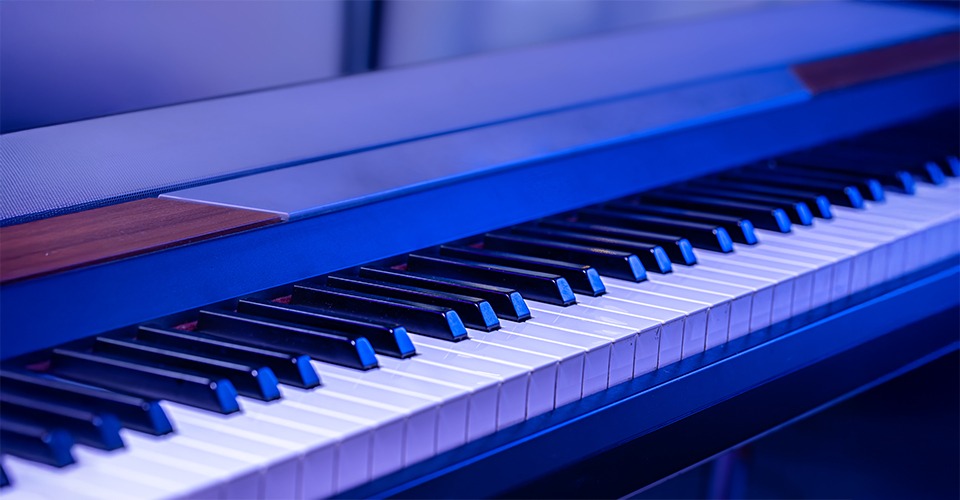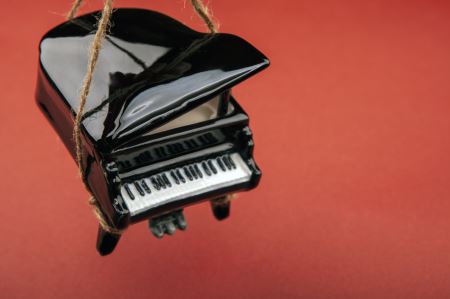 If you’ve ever moved a heavy piece of furniture or appliance, then you know that these weighty pieces require a lot of care and attention. But what about a piano? Surely nobody could move one of those on their own!
If you’ve ever moved a heavy piece of furniture or appliance, then you know that these weighty pieces require a lot of care and attention. But what about a piano? Surely nobody could move one of those on their own!
There are critics when people discuss the prospect of moving a piano. “Pianos are heavy!” “They’re expensive!” “You simply can’t move it!”
While it is true that pianos weigh anywhere between 300 lbs. to over 1000 lbs. – and can cost upwards of a million dollars for the finest concert grand, moving this instrument doesn’t have to be difficult.
We typically recommend hiring professionals to tackle risky moves. But for a piano move, if you have the right tools and preparation, it can be done.
Get Piano Moving Materials
You can break down your moving supply list into two basic categories: moving equipment and protective equipment. You can rent many of the big equipment pieces like moving straps, heavy-duty dollies, and appliance straps from truck rental companies or local equipment rental companies.
Here’s what you’ll need to protect and move your piano
Moving equipment that you might need include:
-
Piano moving straps (for all pianos): These are heavier duty than typical ratchet straps or moving straps. They should be able to wrap all the way around your piano.
-
Piano or furniture dolly (for all piano types): Dollies roll much easier than piano casters. They don’t damage hardwood flooring and won’t cause piano legs to bend or break like piano casters can if debris gets in the way.
-
Piano skid dolly (for all grand pianos): These come in different lengths. Get one that will fit the long, flat side of your grand piano.
-
Stair climbing dolly (for all pianos): You can move upright pianos upstairs, but a stair climbing dolly can help. These dollies are absolutely necessary for moving a grand piano up stairs. They are very expensive to buy ($1,000-$3,000). We recommend hiring movers if you need to move a grand piano up stairs.
Protective equipment for all piano types include:
Moving Blankets: Easy to rent and buy. Necessary to protect while moving in/out of a building and during truck transport. They can also be stacked to provide leverage when moving a piano onto a moving dolly.
Blanket Straps: These help keep the moving blankets in place.
Plastic Wrap: We like to wrap pianos in plastic wrap to protect delicate surfaces from sweat oil, and scratches.
TIP: Don’t forget your toolbox. Most pianos have removable legs and pedal systems that should be removed. Make sure you have the right wrenches or sockets for hardware removal.
Take Measurements and Plan Ahead
Before you move a piano, plan your route. If the piano was able to get into a building, it can get out. But if that path was through a second-story balcony, then you might want to hire some help.
Measure doorways, hallways, and stairwells to be sure that your piano can move in (and out) of the building. You can preemptively take off doors, lay down plastic flooring protection, and place padding around banisters, railings, and corners.
Get Moving Help
Surely there have been strongmen that have moved a piano solo. But even if you’re exceptionally strong, we recommend getting a team of strong, useful people to help move.
If you have at least three strong friends or family members to help, then your move will be much easier. For moves involving a concert grand piano or household baby grand, you may want more help. Be sure that your helpers have appropriate shoes, clothing, and a positive attitude.
If you don’t have enough friends or family to help, you can always hire reliable labor-only professional movers to help you out at an hourly or flat rate.
Moving a Piano by Yourself
If you have enough help, a plan, and the right tools, then you’re half-way to moving your piano. There are a few notable differences between moving a grand piano and upright in terms of process. Let’s go over some steps:
Moving a Grand Piano
Moving a grand piano requires very little brute force. But it does require leverage, patience, and care. Here’s how we recommend moving a grand piano:
-
Lower the piano top
-
Wrap the entire piano in plastic wrap
-
Cover the piano’s sides with moving blankets (especially the flat, left side)
-
Secure the pads with moving straps
-
Stuff moving blankets under the pedal bracket
-
Tilt the piano away from the flat-side
-
With tools, remove the keyboard-side leg (on the “flat side of the piano)
-
Move a piano skid that is placed on top of a moving dolly near the piano’s left side
-
With help gently tilt the piano’s side onto the piano skid atop the moving dolly
-
With the piano now on its edge and padded on the bottom, continue to place blankets on top of the piano
-
Secure the piano to the moving skid AND dolly underneath
-
Remove remaining legs and pedal unit
-
Wrap legs and pedal unit them individually in moving blankets
-
With the piano on the moving dolly, maneuver it onto the moving truck
-
Make sure that every person has a hand on the piano for balance
-
Add extra moving blankets thick on the back and corners where straps make contact and secure it to the truck wall with included straps
You can follow these steps in reverse when moving your piano into a new location.
The critical differences between moving a grand piano are weight and size. Let’s review the steps for moving an upright piano properly
Moving an Upright Piano
To move an upright piano, there are fewer steps, but careful attention is still necessary to ensure a safe move. Moving an upright piano is still challenging, and less leverage can be used to maneuver it. Doing a “straight pick up” by lifting from the handles on the piano’s back is the most common way to get a piano onto a dolly or down stairways.
To start, you’ll want to protect the piano:
-
Close the keyboard cover and wrap the piano in plastic wrap
-
Then wrap the piano with moving blankets
-
Secure the blankets with moving straps
-
Take care to protect the pedals when wrapping the piano
-
Get one or two moving dollies
-
With a helper, on the backside and at least one on the front-side, pick up the piano and set it on the dolly
-
Secure the piano to the dolly with piano straps
-
Move the piano onto the moving truck and secure it to the sidewall just like you would with the grand piano – taking extra precaution to pad the sides and back against strap abrasion
Hiring Professionals
If a DIY piano move isn’t up your alley, you can always hire professionals to handle the load (and assume the risk). Trained professionals take the guesswork out of your move, and you’ll have the peace of mind knowing that everything is taken care of.
We typically recommend specialty movers for the most demanding move scenarios – like taking care of a long-distance move with expensive antiques or prized pianos.